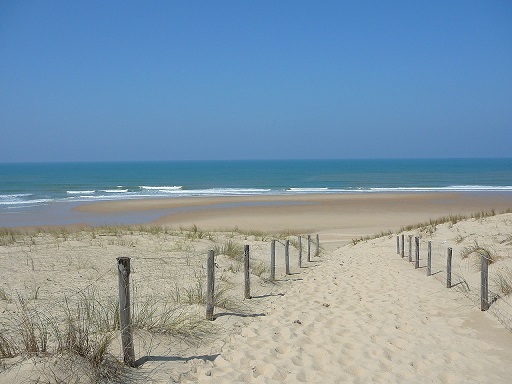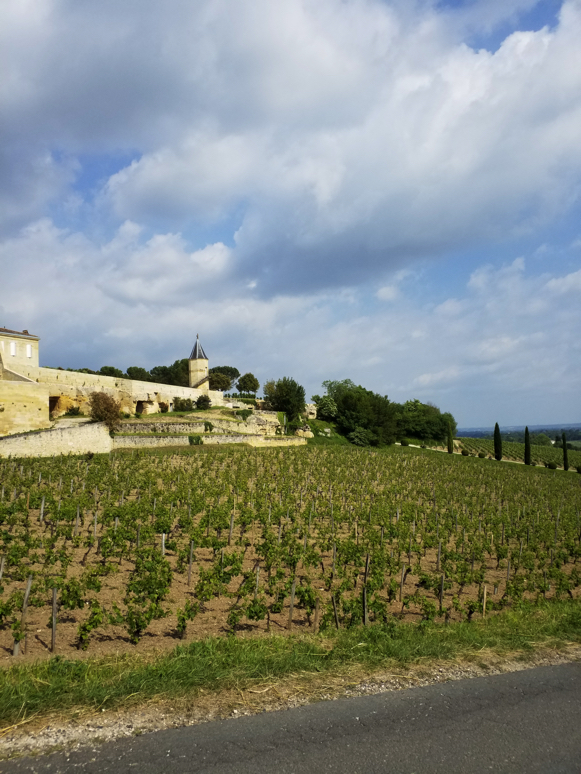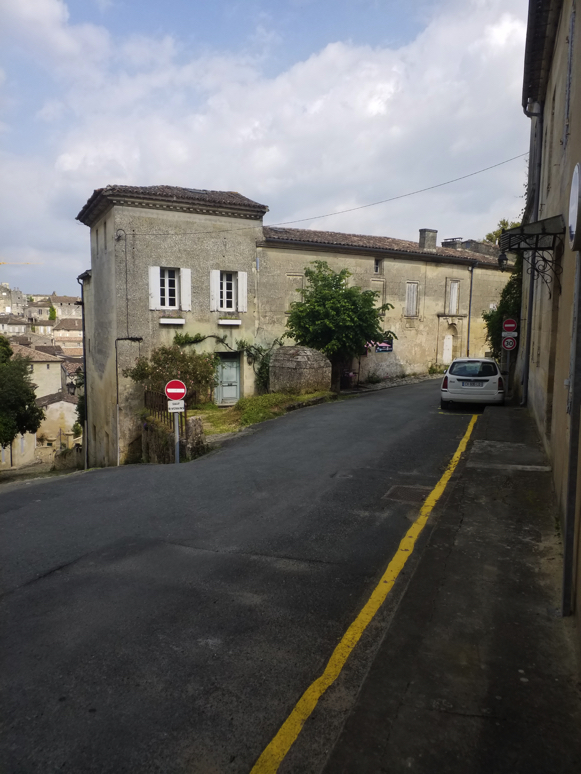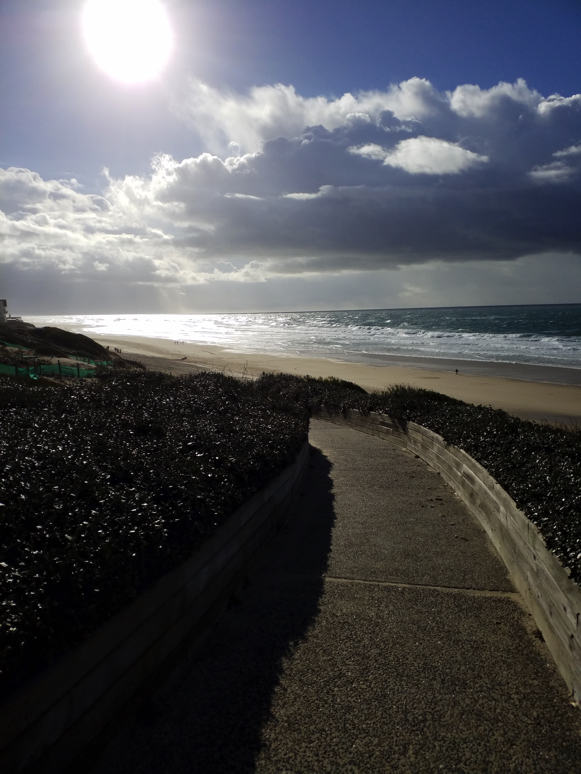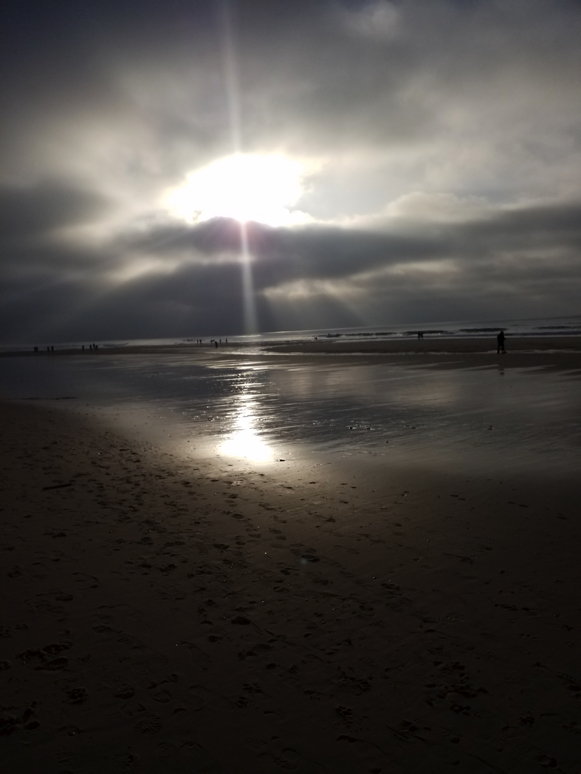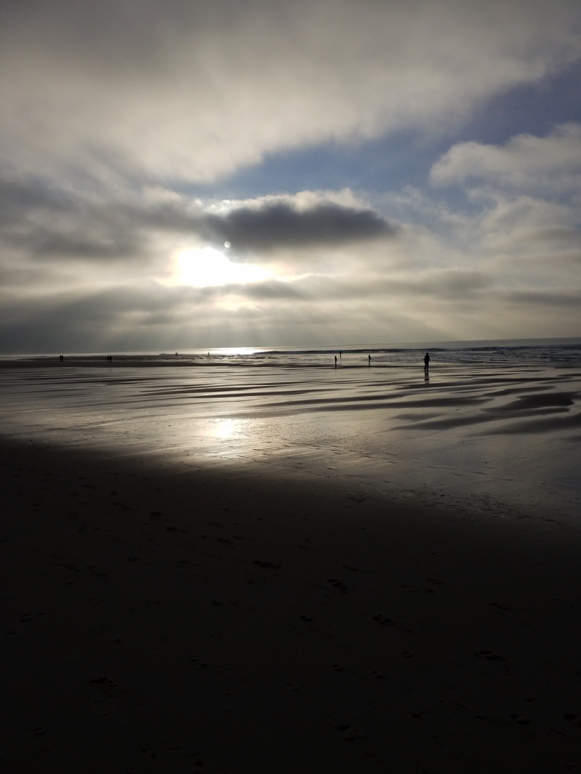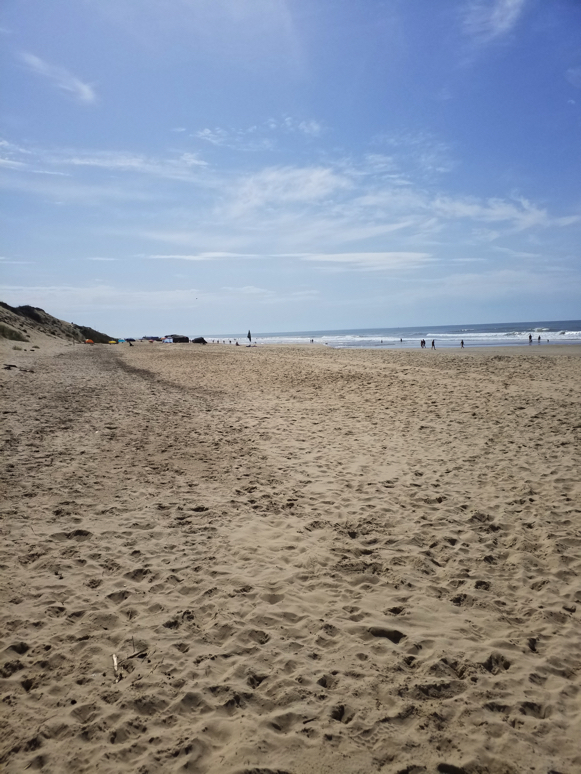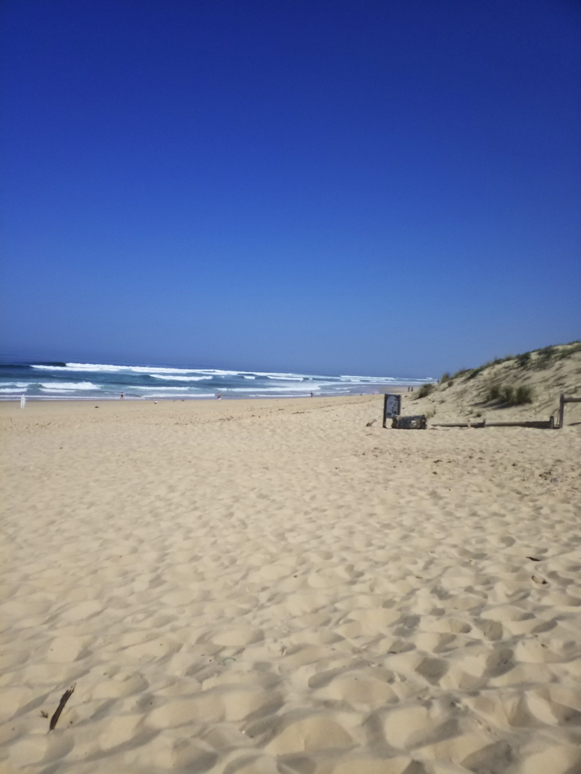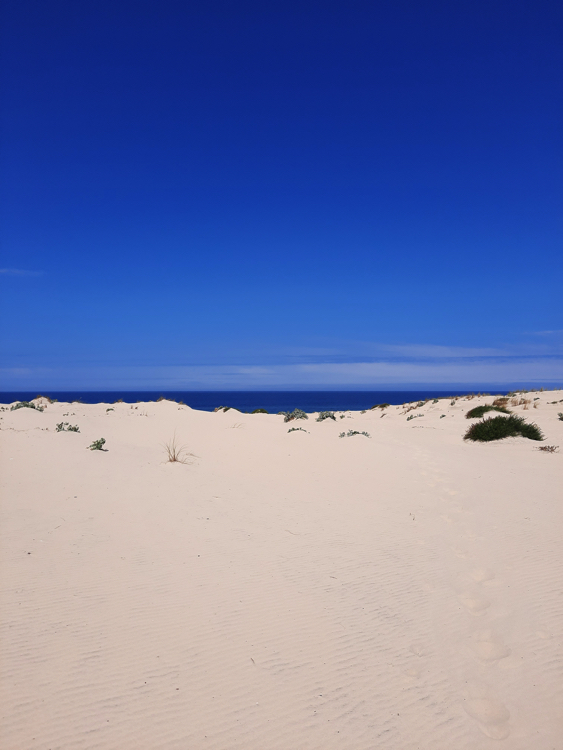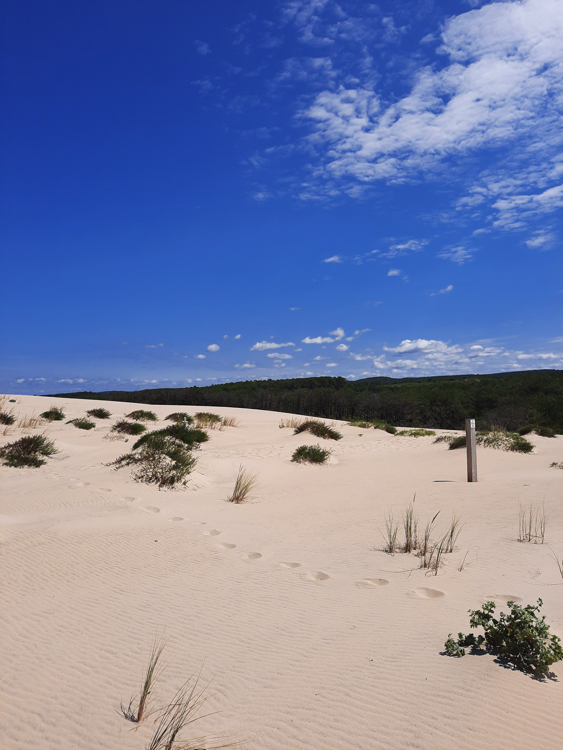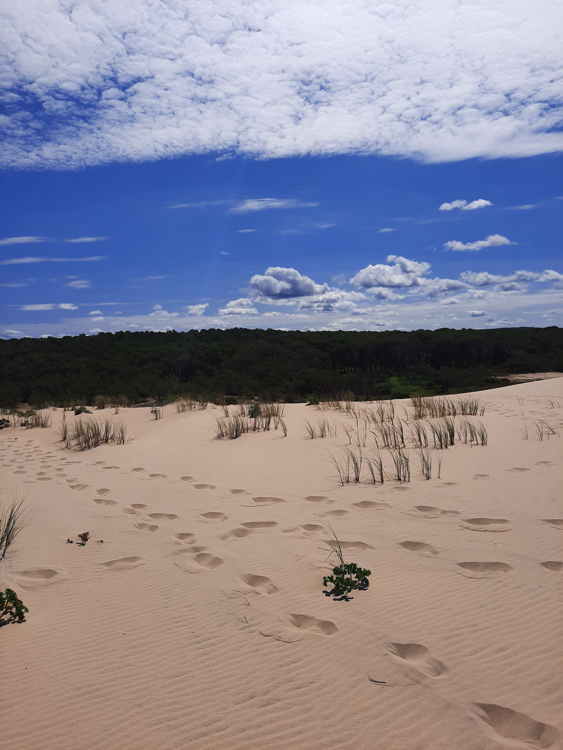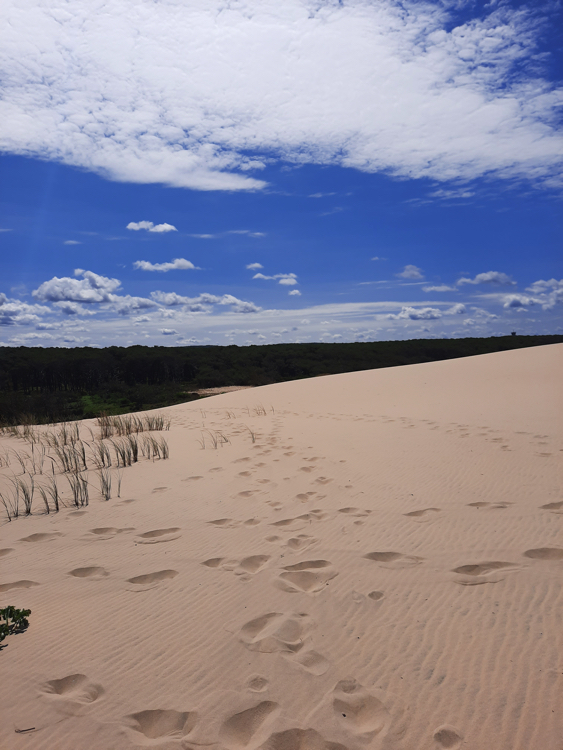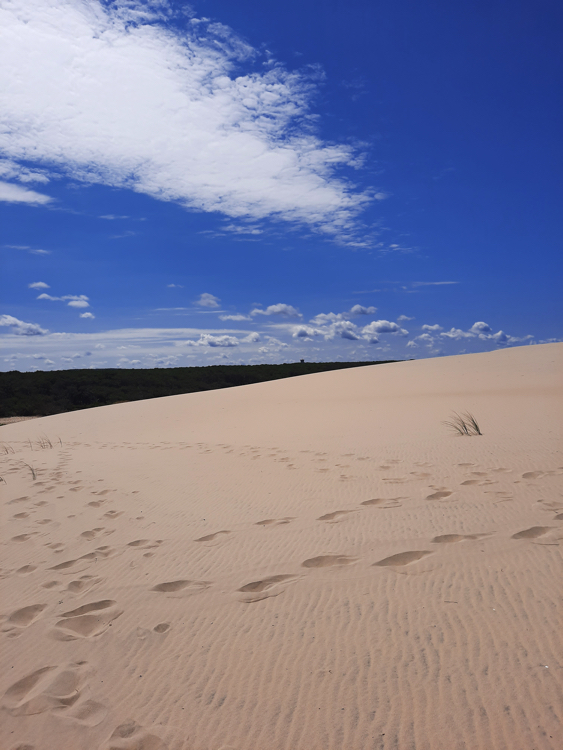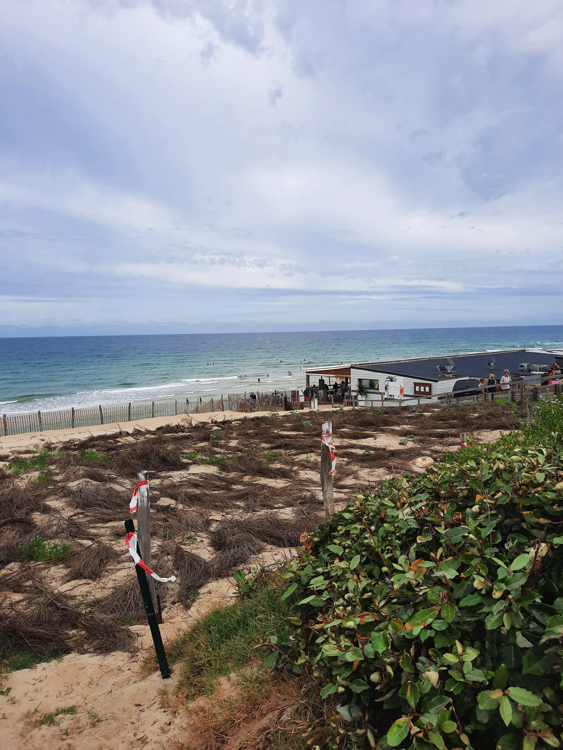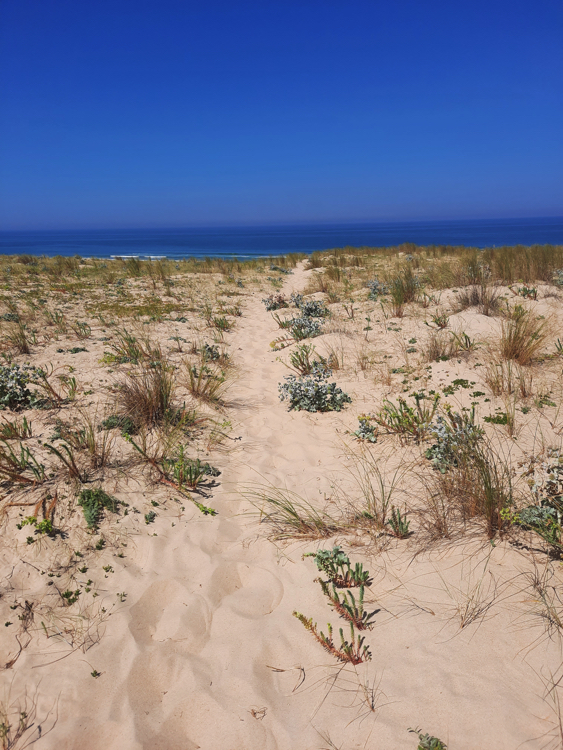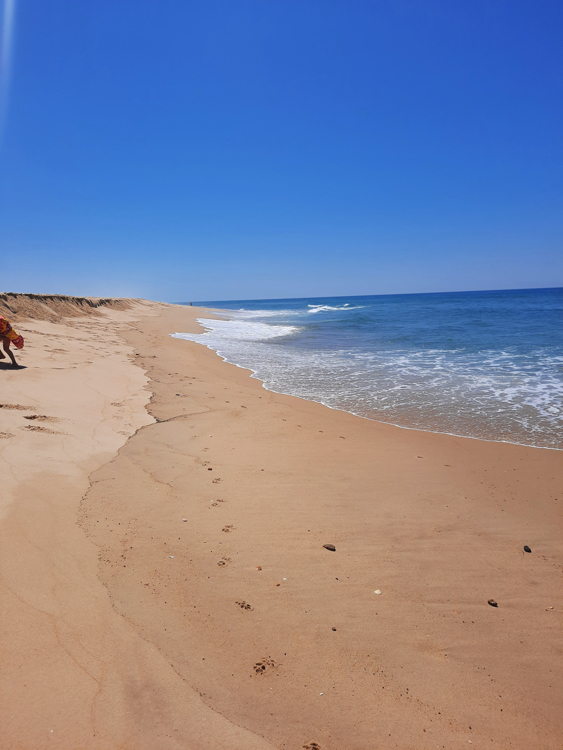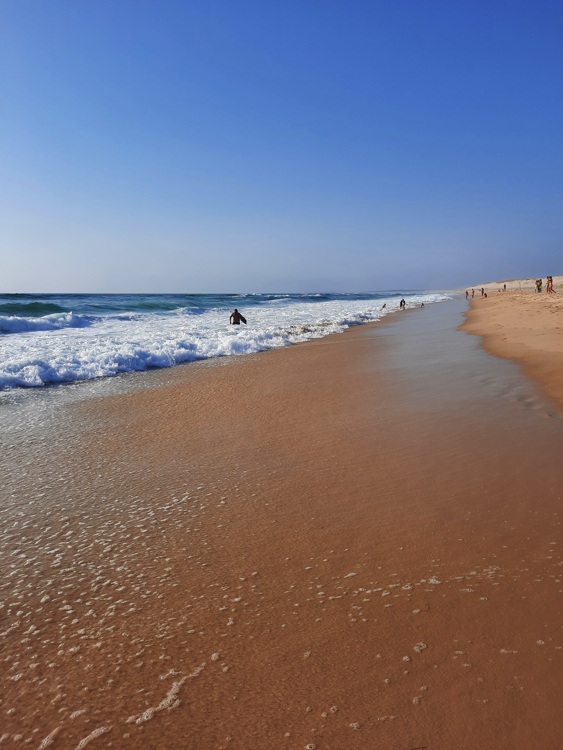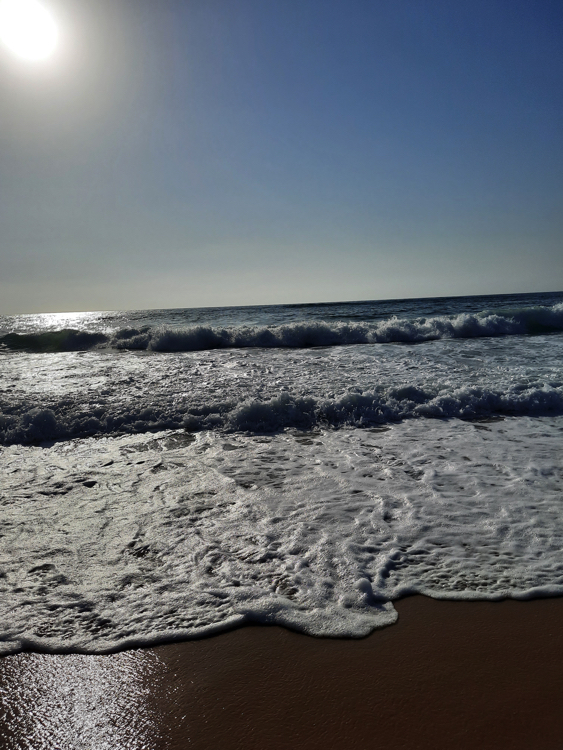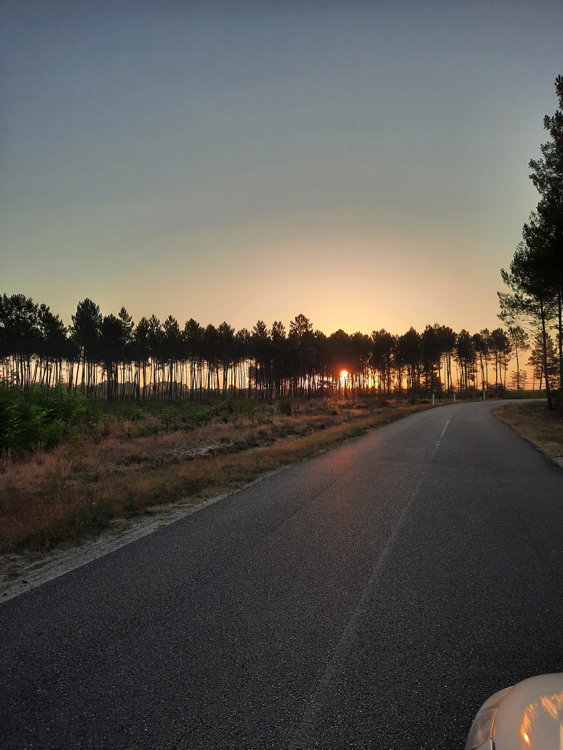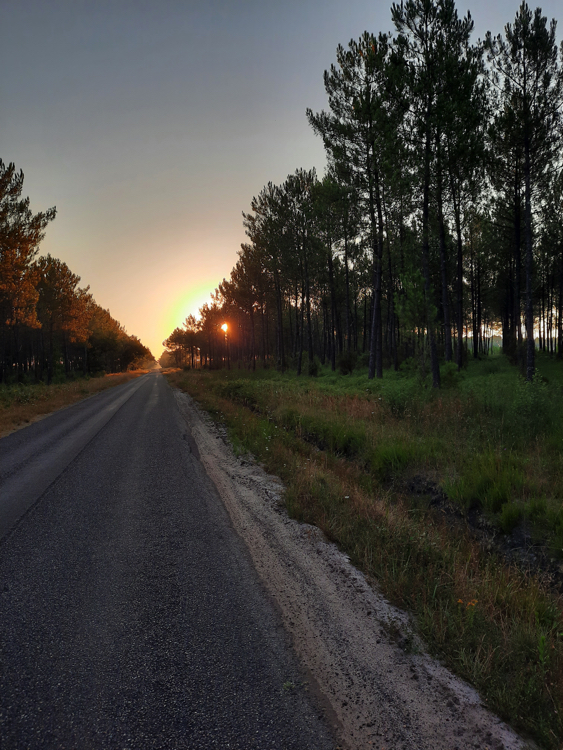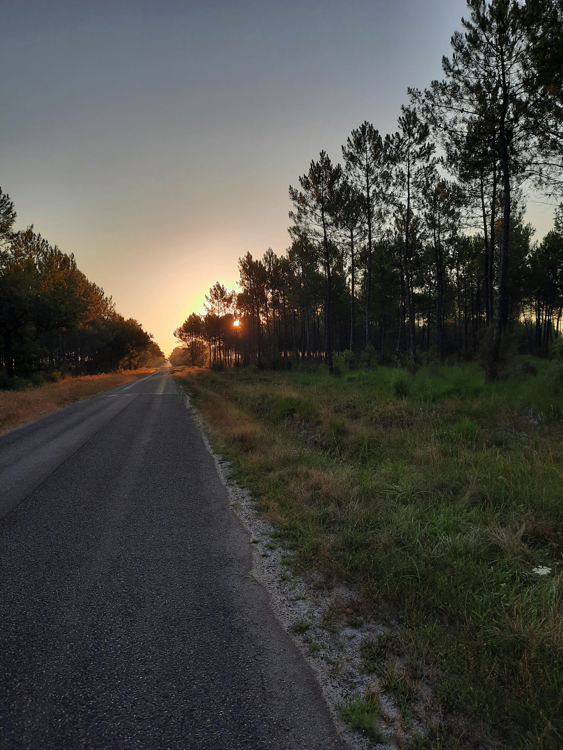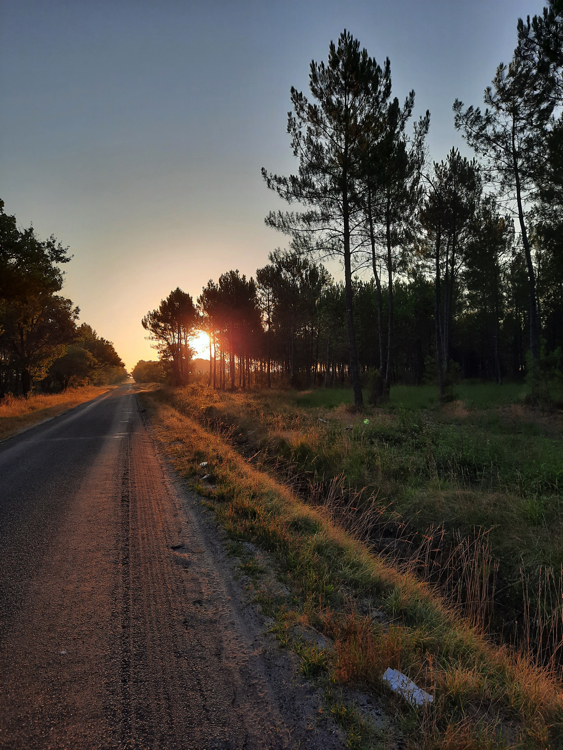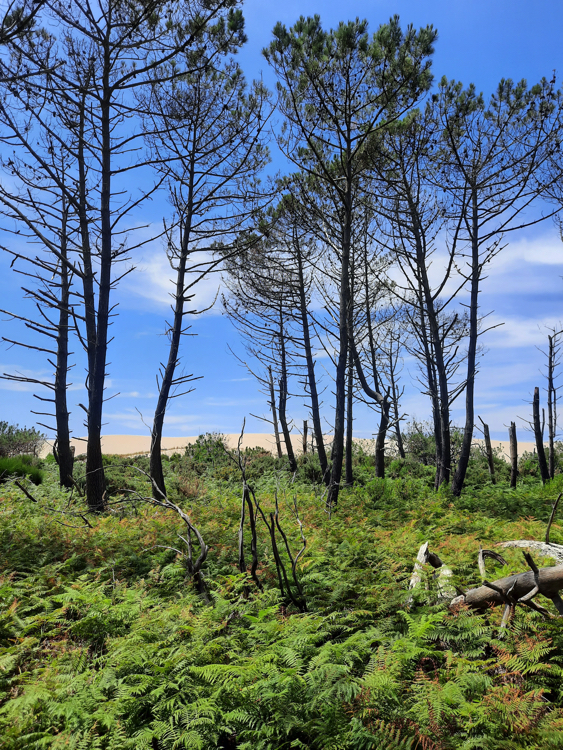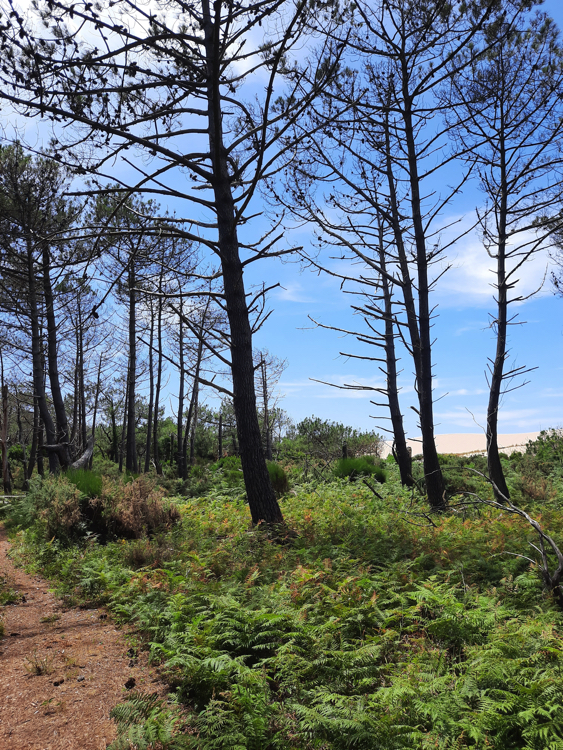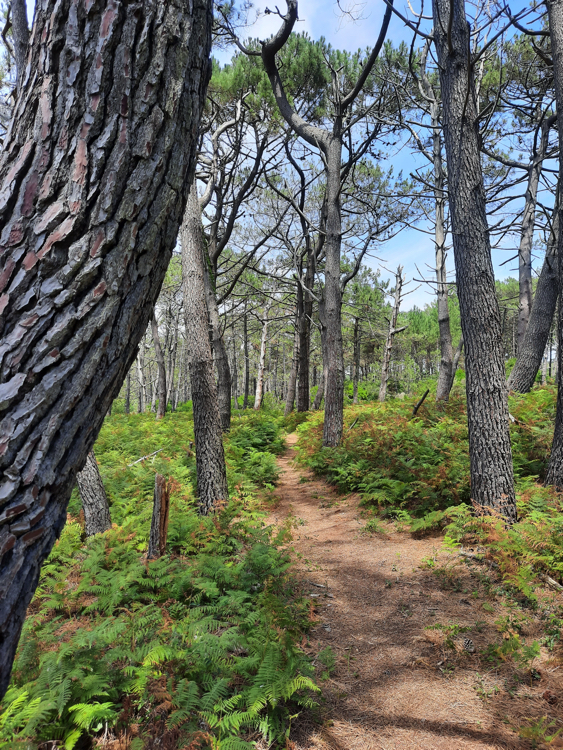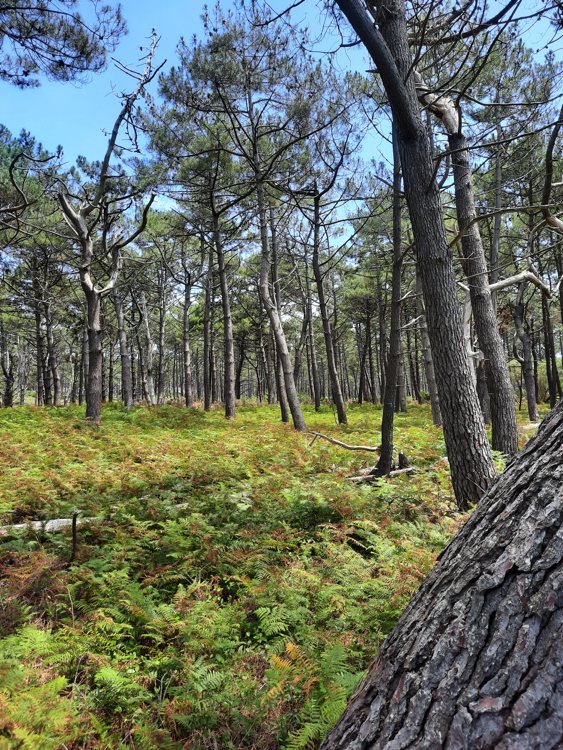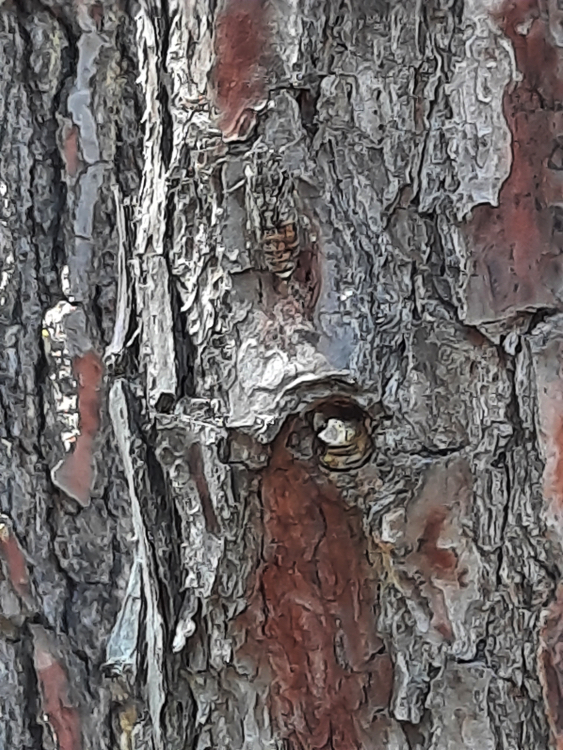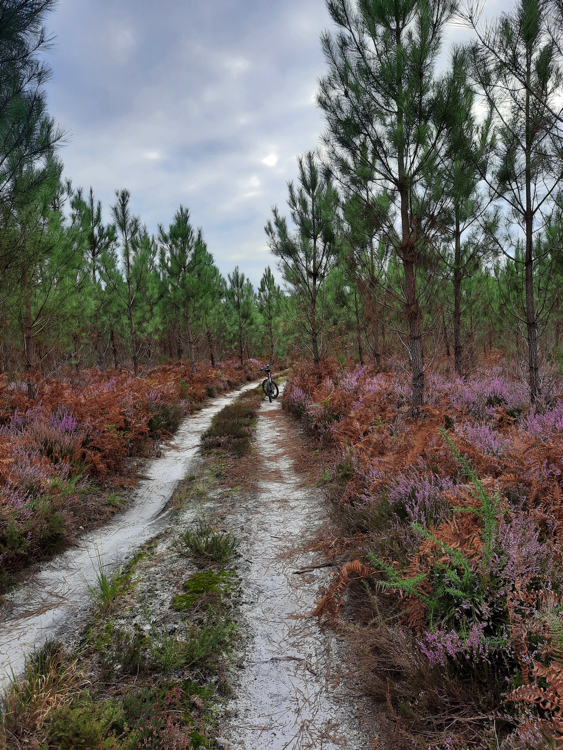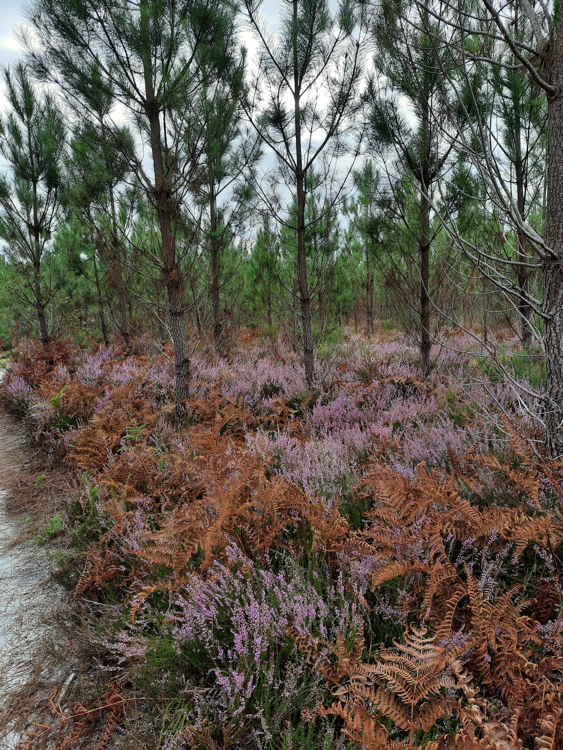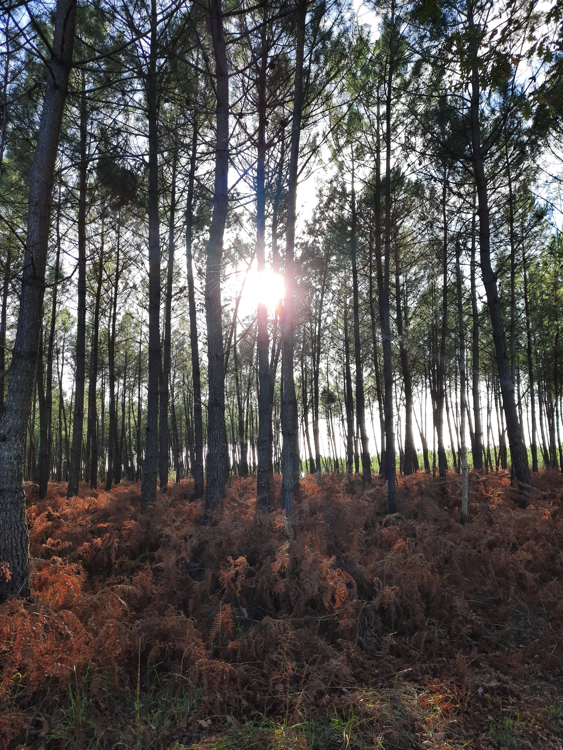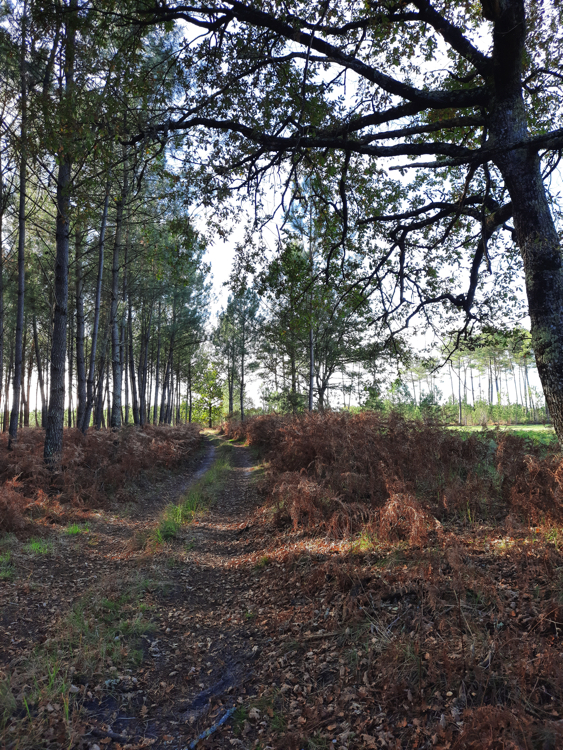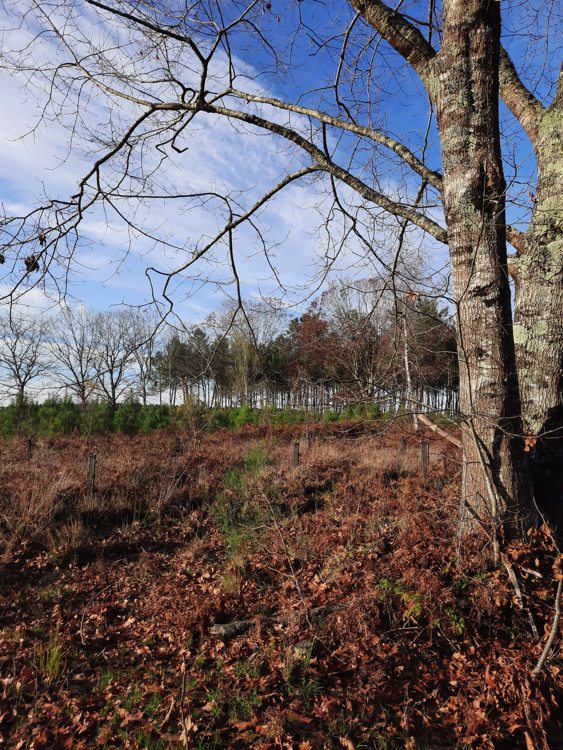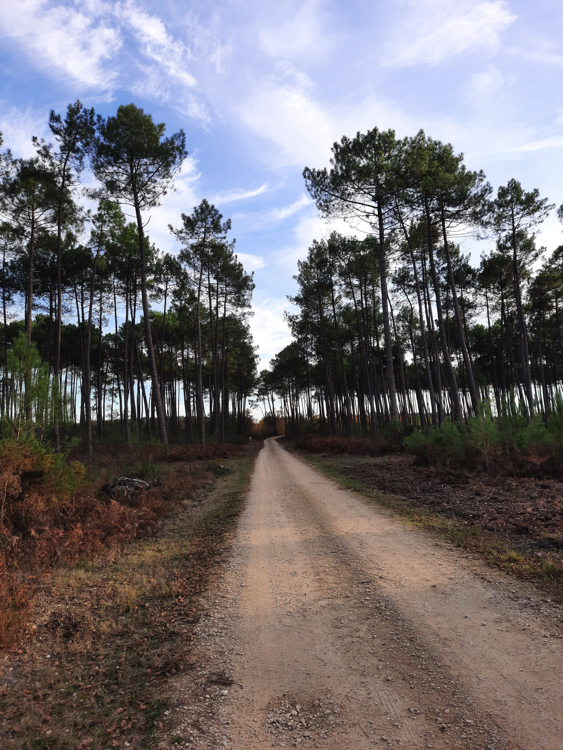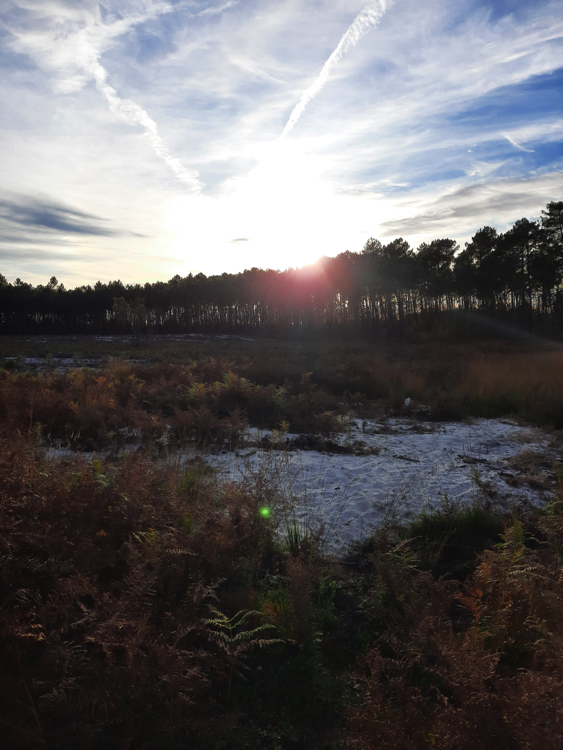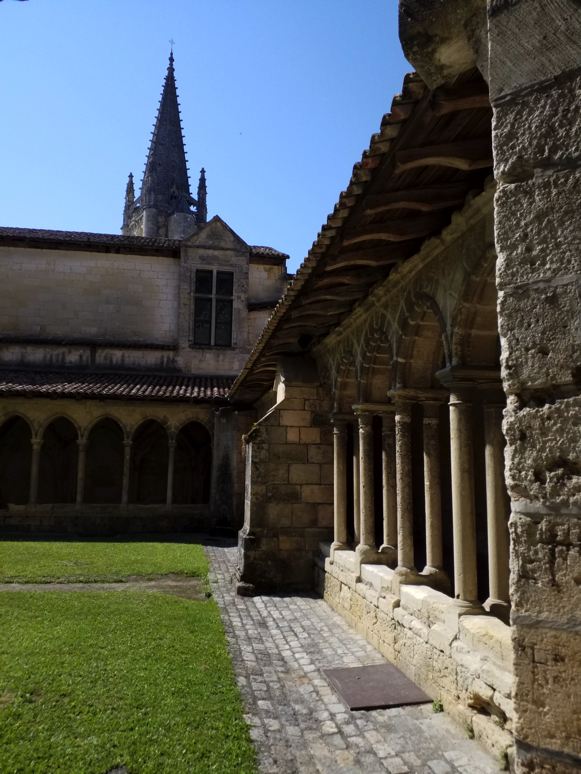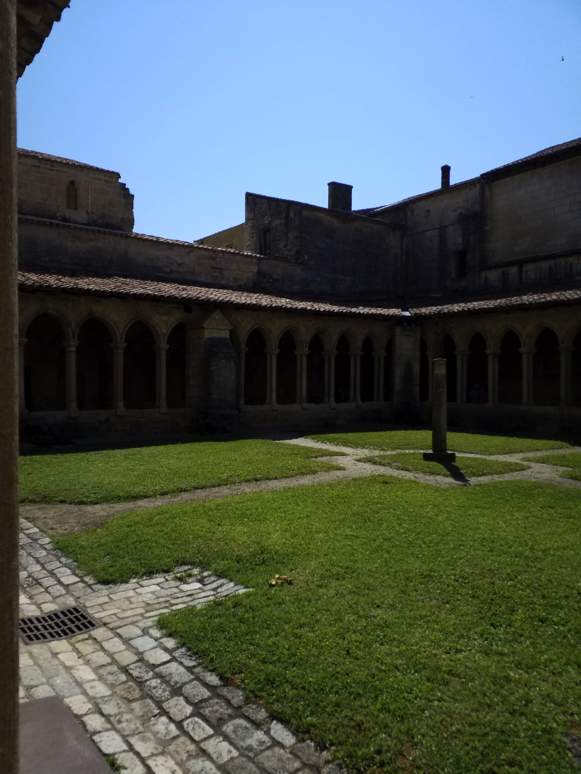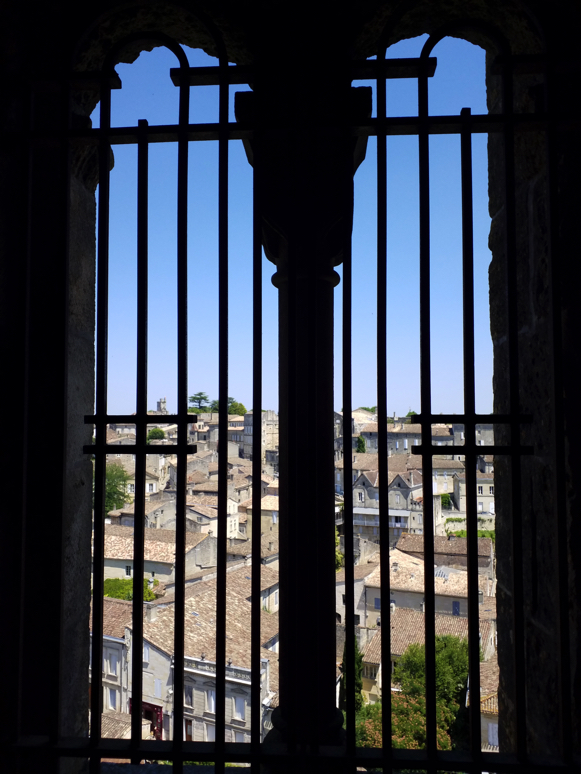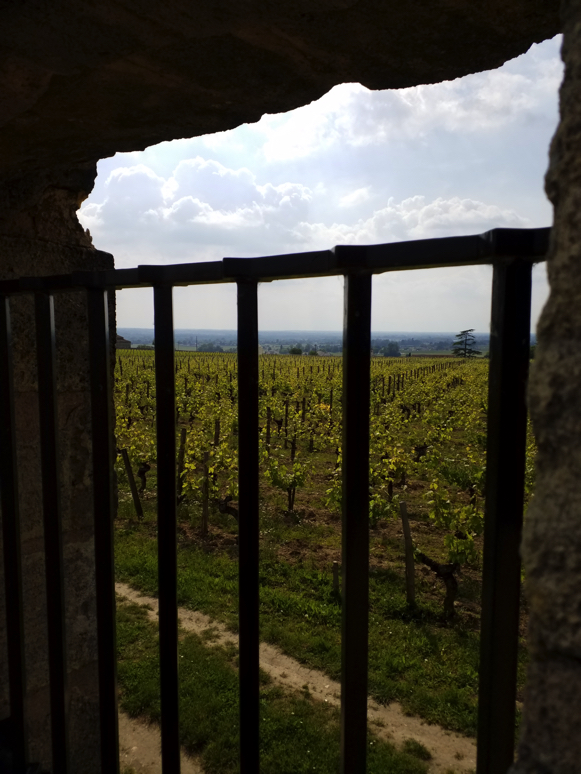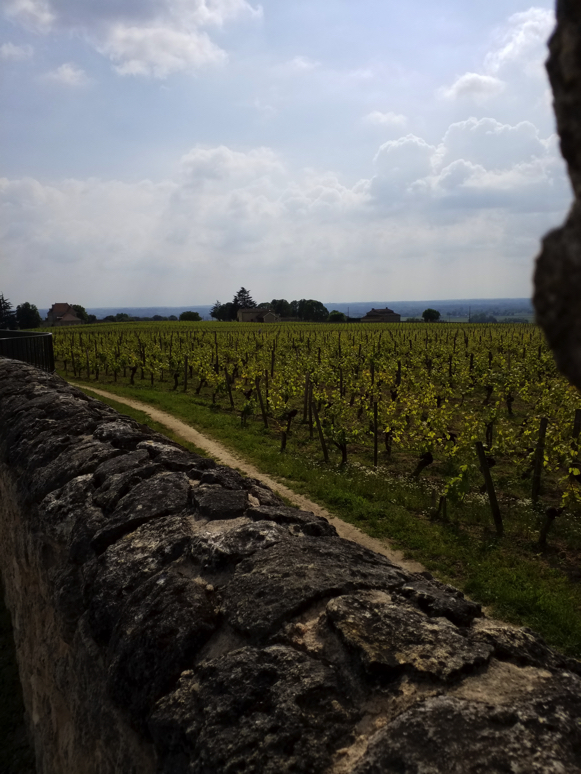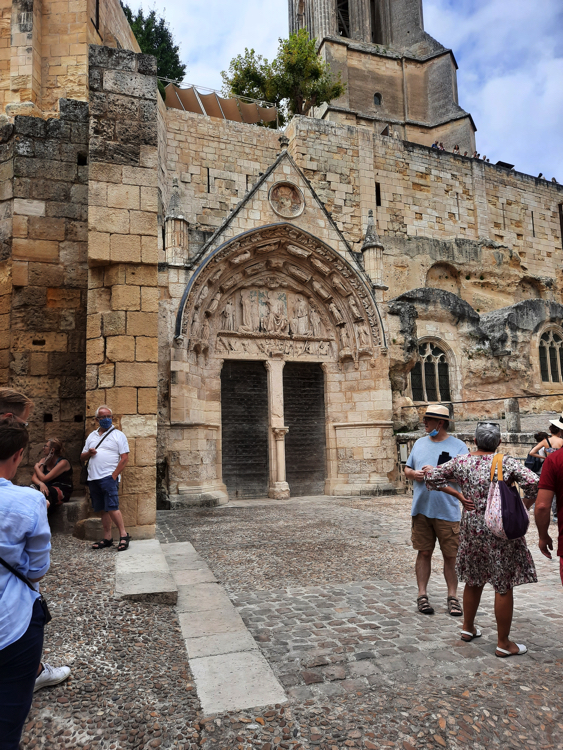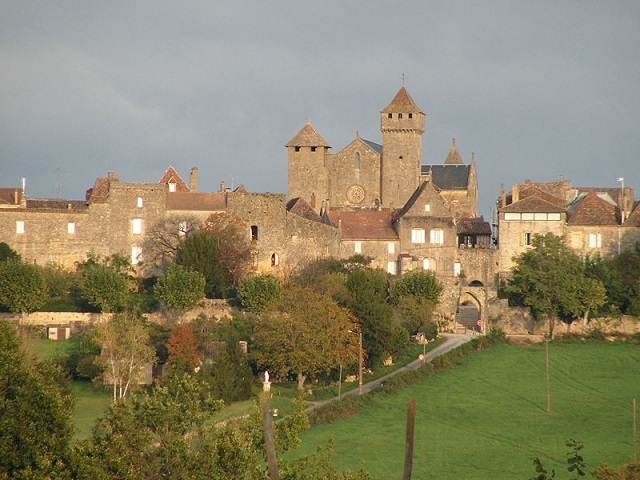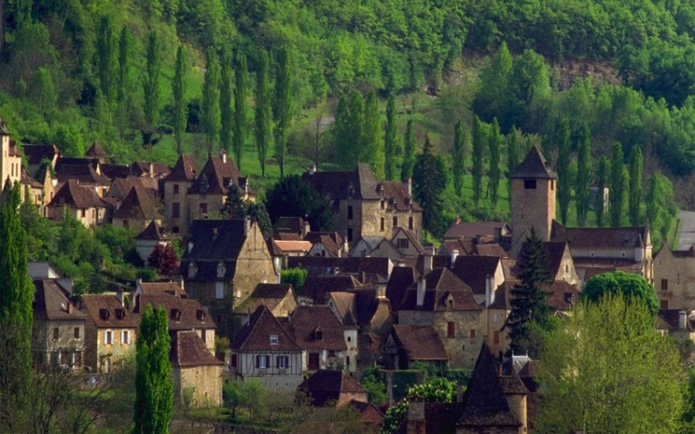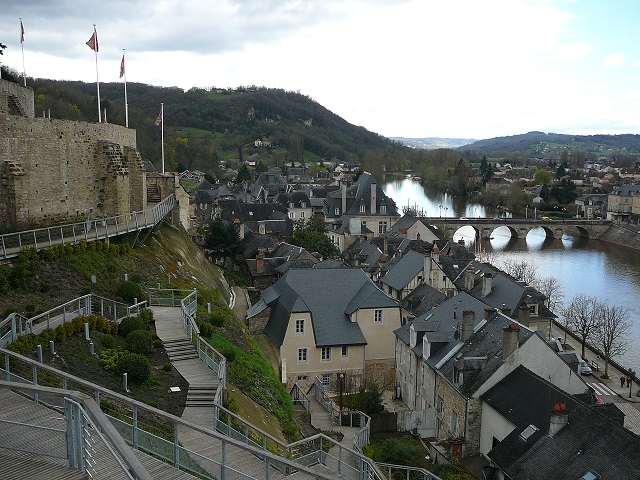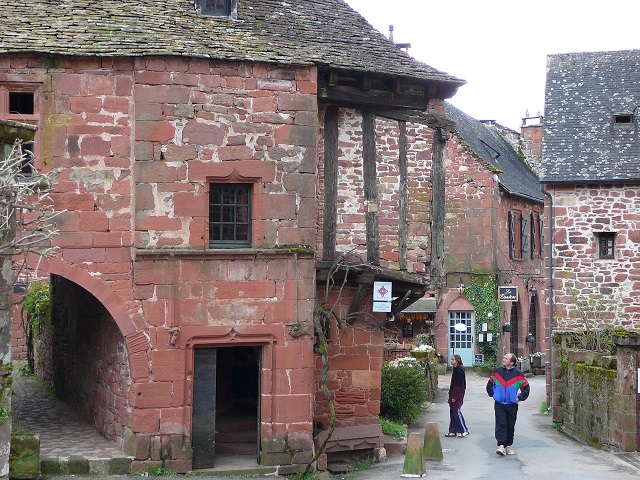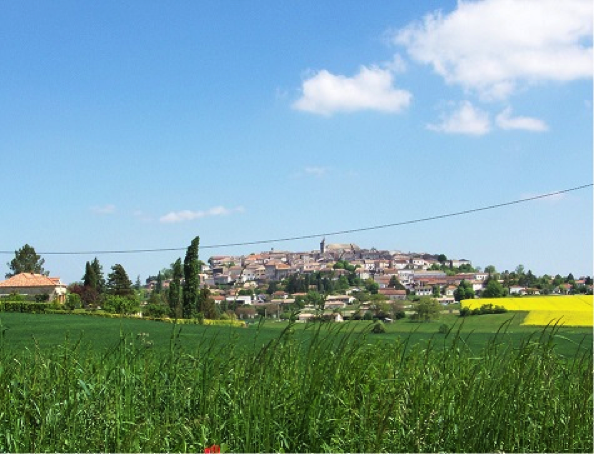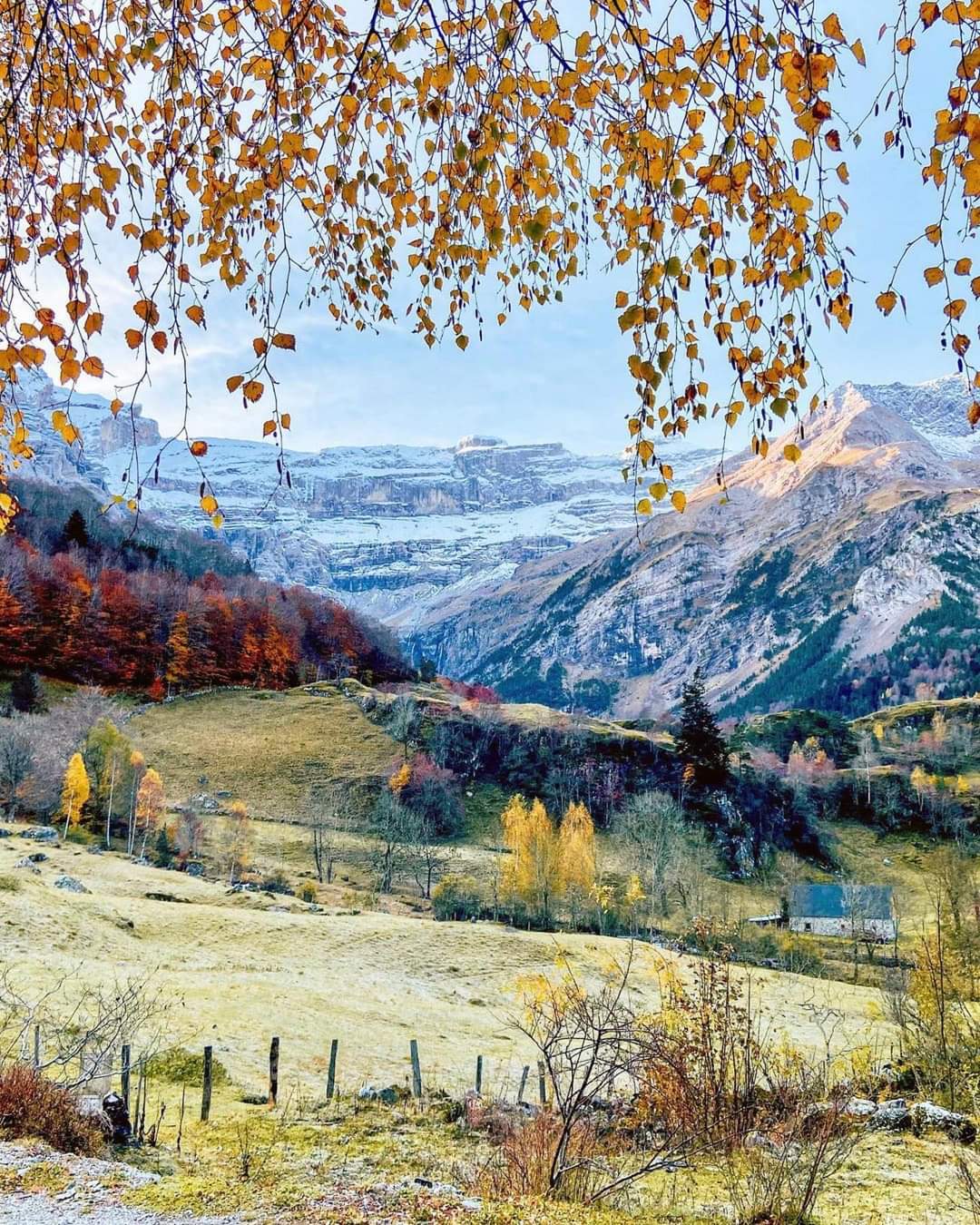Uncategorised
- Details
- Administrator
- Uncategorised
- 1685
OUR BEACHES in the SOUTH-WEST of our beautiful France

Geomorphology defines a beach as an “accumulation on the seashore, on the shore of a stream or lake of material ranging in size from fine sands to boulders”. The beach is therefore not limited to stretches of fine sand; there are also pebble beaches and, in the case of larger blocks, beaches called beach-rock.
We tend to restrict the beach to the foreshore, but it also includes the fore-beach (also called the fore-coast and where we find the fore-dunes, called "dunes" by vacationers), which is part of the infra-coastal zone. The beaches are oriented perpendicular to the prevailing swell.
The fine sandy beaches are the most popular with vacationers. We can distinguish “white” sands of organic origin (skeletal remains and other shells, limestone or siliceous) from “black” sands of mineral or volcanic origin. However, the distinction should not be made only on the color, sands of organic origin may appear black if they are loaded with organic matter, and sands of mineral origin may be light, depending on the type of rock that has them. give birth.
Artificial beaches
In the XXIe century, 75 to 90% of beaches are threatened with disappearance, due to human exploitation or marine submersion. Part of this sand is used to recreate artificial beaches, with much less ecological qualities.
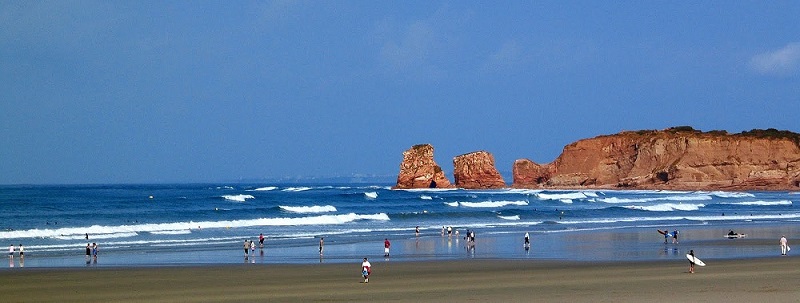
Natural beaches
In the XXIe century, 75 to 90% of beaches are threatened with disappearance, due to human exploitation or marine submersion. Part of this sand is used to recreate artificial beaches, with much less ecological qualities.
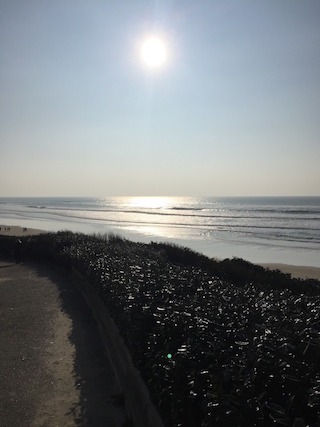
Here is an official link, click and enjoy your visit !
Here is another official link, Vielle Saint Girons: click and enjoy your visit !
Naturist beaches
In many countries, beaches have always been partially or totally accessible to nudity enthusiasts. If you would like more information on this subject, please contact the official organizations in the tourism sector.
Information on naturist beaches
France has 5,500 km of coastline. On nudist beaches (or free beaches), wearing a swimsuit is not compulsory. There are two types of nudist beaches:
* Nudist beaches recognized by local authorities (prefectural or municipal authorization).
* The beaches which have become nudist by dint of being frequented by nudists (tolerance). Naturist centers are private land.
Like non-naturist campsites, they offer various services such as cultural, sports and well-being activities, childcare (even at a young age), clubs for teenagers, a catering service, a mini market….
All naturist centers have a naturist bathing area: beach, river, swimming pool ... Water being an essential component of well-being!
For a list of approved naturist beaches, visit the website of the French Federation of Naturism (FFN)
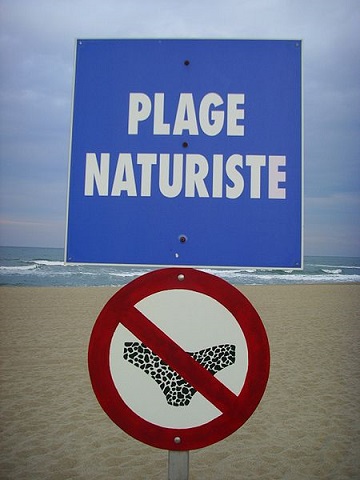
Private beaches
Private beaches are wonderful beaches but it is completely confidential !! Too bad, we would all be curious about the beauty of each one!
A few other beaches on our Landes coast to discover ...
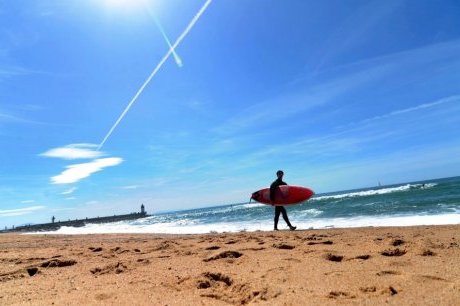
Hossegor beach and surf enthusiasts
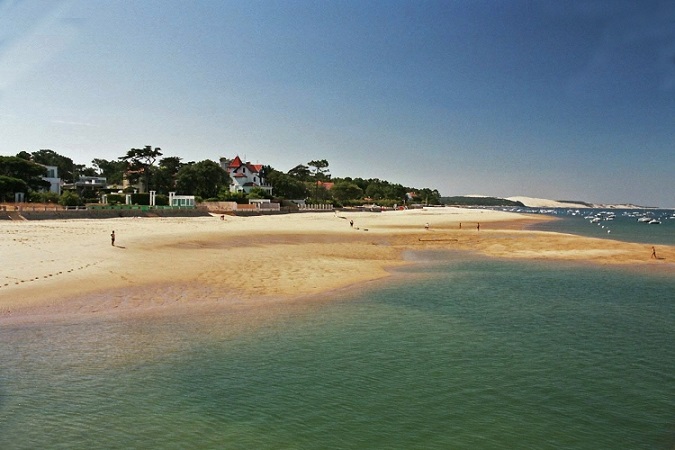
- Details
- Administrator
- Uncategorised
- 1244
Hello everyone,
You have the opportunity to express yourself following your visit to our site, give your comments ...
Thank you in advance and see you soon ^^
- Details
- Administrator
- Uncategorised
- 1200
FORUM 
Hello and welcome,
If this is your first visit, we invite you to consult the Frequently Asked Questions. Before you can post a question, you must register on the site. To view the messages, select the forum you want to visit from the list below.
Quick instructions for creating a note:
At the top right, click on the "Connect or register" area
If necessary, create an account (a validation will be carried out by the administration of the Forum so that you can benefit from the tools of the forum to dialogue).
Once the account is validated / your session activated, click on the "Forum that interests you" link in order to obtain a list of directories (sections) (do not hesitate to consult the FAQ in case of questions).
Choose the most appropriate section to post your question (see How to ask a question?
Finally, click on the New topic button that appears at the top left, before the list of different existing topics.
The MSOF Forum is a free community medium. Its vocation is to exchange subjects concerning the MSOF site through its portal monsudouestfrance.com, members are totally free to dialogue and to create if they wish their personal blogs or through the MSOF site in order to share them. .
Best regards, and good luck with MSOF by JOOMLA: the forum team.
- Details
- Administrator
- Uncategorised
- 2908
Saint Emilion
Saint-Émilion (In Gascon: Sent Milion) is a town in the southwest of France, located in the department of Gironde in the Nouvelle-Aquitaine region. Its inhabitants are called the Saint-Émilionnais.
In the heart of the Libournais country, in a region of wine-growing hills, this medieval city of 1,874 inhabitants (in 2017) is camped on a cat eminence and is located at the crossroads of Bordelais, Saintonge and Périgord.
Leading tourist site - 1,000,000 people on average visit it each year - it has an important monumental adornment (hermitage, monolithic church, collegiate church, archbishops' palace, opulent buildings and remains of fortifications) which is declined along the alleys tortuous (called “mounds”) and shaded plots, and enjoys the reputation of its oenological (Saint-Emilion vineyard) and gastronomic (macaroon, pâtés, foie gras) heritage.
Several events take place there each year, including Philosophia, an event for the general public around philosophy created in 2007 by the director and scenographer, Eric Le Collen, inspired by the philosophy festival in Modena.
The medieval city (and its "jurisdiction") has been listed as a World Heritage Site by Unesco since 1999. It constitutes "the remarkable example of a historic wine-growing landscape which has survived intact" and "illustrates in an exceptional way intensive cultivation of wine vines in a precisely delimited region ”(registration criteria adopted by Unesco in December 1999 in the Cultural landscapes category).
Geography
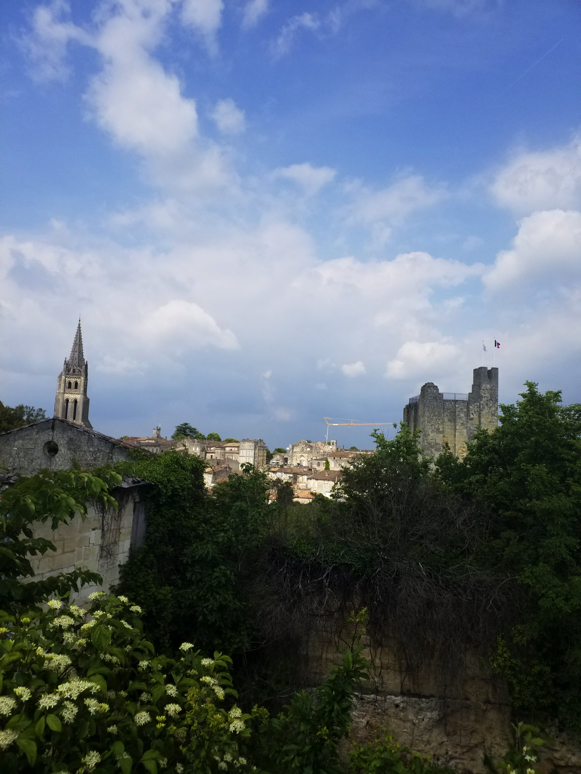

Saint-Émilion, the village (2018) (photo on the right, view from the King's Tower).
The village is located on the slopes between the Dordogne and Isle and between Libourne and Castillon La Bataille.
Between vineyards and waterways, along wooded hillsides and scenic roads, the jurisdiction of Saint-Émilion stretches over 75 km2 around a particularly well-preserved medieval town. It is a set of eight villages organized and united from the Middle Ages around the free commune of Saint-Émilion. Its geographical area of approximately 7,846 ha corresponds to the current area of the Saint-Émilion and Saint-Emilion Grand Cru wine appellations, grouping together nearly 800 wine estates ("châteaux").
The terroirs are divided into five large groups nested one in the other. In the center of the appellation area is a limestone and clay-limestone plateau where, in many places, the rock is covered with only a thin layer of earth. The coast, largely planted with vines despite the slope, and the foot of the coast, more clayey. The valley that extends to the Dordogne, made up of sandy loam and sandy gravelly soils. Finally, the sandy glacis which covers the north-west of the appellation area ends towards the Pomerol graves with around sixty hectares of gravelly terrain.
The "zero" of the Swiss geographic coordinate system is located in the municipality.
History
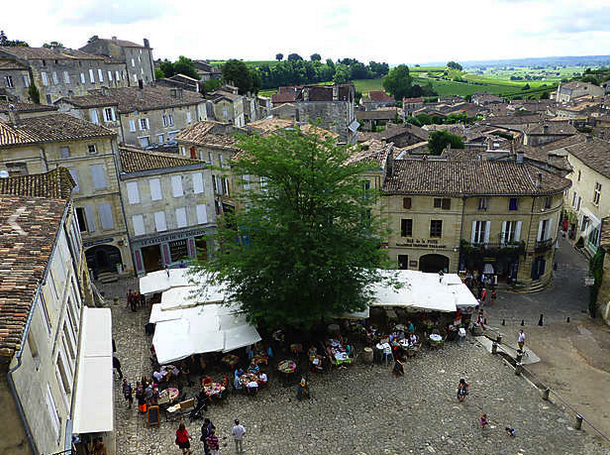
The main square seen from the monolithic church
The site shows traces of occupation as early as 35,000 BC. A Gallo-Roman villa also existed at the bottom of the hill destining the site for the cultivation of the vine and more generally, certain sources mention a Gallic oppidum. This is evidenced by various elements of mosaics discovered at the place called Le Palat.
In the 8th century, a Breton monk born in Vannes named Émilion chose Ascumbas (former name of the Saint-Émilion site) as his retreat. This man, noted for his charity, left his family and his native Brittany to shut himself up in a cloister, following the direction towards Spain. Fatigue forced him to stop at Saujon, in a monastery of the Order of Saint Benedict, where he worked as a baker. Pursuing his idea of living in the deepest solitude, Emilion left the monastery and came to settle in the forest of Cumbis. He settled on a cliff where he dug a troglodyte hermitage. It was around the Hermitage of Saint-Emilion that the first hovels were grouped.
Main article: Émilion de Combes.
Its name was given in Côtes d´armor to the church built in the 15th century in Loguivy-Plougras (Plougras being the mother commune, formerly "Plou-Croas", the parish of the Cross, and Loguivy being a truce depending). A statue of Sant Milion was placed in the heart of this church: at the feet of the monk three large round loaves intended for the poor (the "sacavins" of the Bordeaux vineyards sometimes come to honor him during the patronal feast, but here it is the river which bears the name of Saint-Emilion).
Bursar at the priory of Saujon, in Saintonge, noted for his great virtue, Émilion eventually retired to the Combes forest which then covered the current site of Saint-Émilion.
By his miracles and his generosity, his fame radiated beyond the valley and many disciples joined him. For seventeen years, Emilion evangelized the population, thus creating a monastic site which took his name after his death. A community of Benedictine monks managed access to this place of pilgrimage until 1110, when a reform initiated by the Bishop of Bordeaux following the releases of the community allowed the installation of a chapter of Augustinian canons.
The city was built throughout the Middle Ages and was closed by ramparts at the start of the 13th century. It passed through the hands of Jean sans Terre, Louis VIII, Philippe le Bel, and others over the centuries. His special privileges were also renewed on numerous occasions until the 15th century after having been instituted by Jean sans Terre in 1199: Edward I 1289, Edward II 1312, Edward III 1341 and 1357.
In November 1461, by his letters patent, King Louis XI confirmed the privileges granted by his predecessors, then, in May 1472 following the death of his brother Charles of France, when the Duchy of Guyenne which he had recreated for returned to him in the royal possessions. Saint-Émilion was pillaged during the wars of religion by both camps.
The religious heritage of the city was also largely destroyed during the Revolution (Chapter, Collegiate Church and convents). During the period of the National Convention (1792-1795), the town bore the revolutionary name of Emilion-la-Montagne.
The jurade
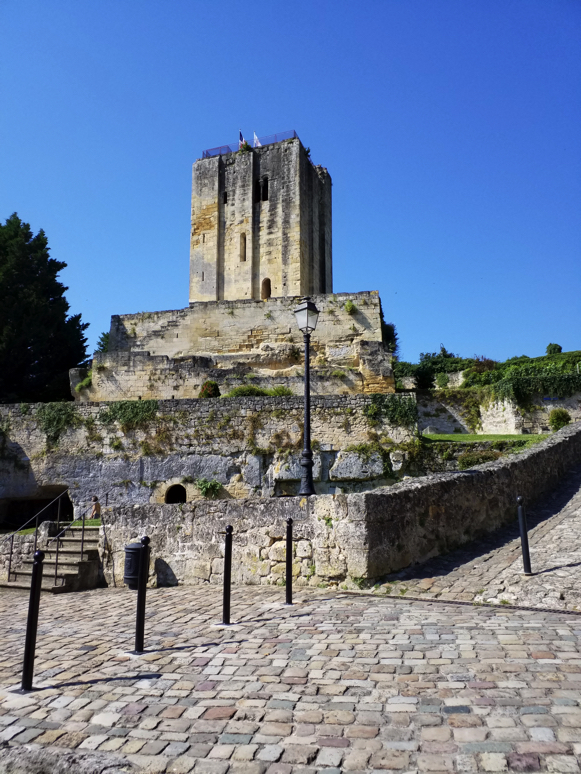
The jurade of Saint-Émilion (2018)
The Jurade was established at the same time as the town of Semelione in 1199 by John Landless, King of England. The latter delegated his economic, political and judicial powers to notables and magistrates in order to manage the general administration of the city. In exchange for these granted privileges, England was able to enjoy the "privilege of the wines of Saint-Emilion". Thus the area of the vineyard increased with the notoriety of the wines. Their quality was subject to the control of the Jurade (by the seal of the vinettier) before transport to England from the port of Pierrefitte on the Dordogne.
The authority of the Jurade continued until the French Revolution in 1789.
In 1948, the winegrowers united in the wine-growing union resuscitated the Jurade in the form of a brotherhood, which then became the ambassador of Saint-Émilion wines throughout the world, with the ambition of guaranteeing authenticity and quality. of its wines.
Jurade is thus the bearer of the notoriety of the appellations, and every year organizes the Spring Festival in June and the Harvest Ban in September.
During these events, members of the Jurade parade through the city, dressed in the traditional red dress, recalling the all-powerful Jurade of past centuries. In June as in September, after attending mass, jurats go to the cloister of the collegiate church or the monolithic church to carry out the enthronements. Then, after lunch, they go in procession to the Tour du Roy, from the top of which they solemnly proclaim the harvest ban or In June, the Jurade proceed to the Judgment of the new wine, intended to predict its qualities (the one drawn of the previous harvest). The Jurade has become the emblem of Saint-Emilion viticulture.
It is made up of 54 jurats, it is administered by the council of the jurade which has 12 members including the 1st jurat, the clerk, the grand financier, the grand vinetier, the marguillier (master of ceremonies).
Economy
Saint-Émilion is strongly marked by agricultural activity, and more particularly wine-growing. The weight of this sector is above the average for the district of Libournais: it reaches 62% against 39% for the Libournais. The construction sector represents a relatively low share of economic activity (2.6% for the whole jurisdiction) which hinders the installation of activities other than those related to the agricultural sector or to the tourism and tourism sectors. trading associated with it.
It is from the diversity of the terroirs that the diversity of Saint-Émilion wines is born. Across all of the appellation's eight municipalities, nearly 5,200 hectares of vines produce the precious nectar each year.
The grape varieties used in 1784 were 34 for the blacks and 29 for the whites. Today 3 well-known grape varieties are in the spotlight: Merlot, which predominates in 60 to 70% of production, Cabernet Franc and Cabernet Sauvignon, all three intended, in assembly, for the production of red wines. .
Local culture and heritage
Places and monuments
The monuments of the city bear witness to this rich spiritual, commercial and wine-making life in and outside the city. The steep alleys (called mounds or escalettes) allow you to discover a village spread out in the shape of an amphitheater on the southern slope of the limestone plateau; from this were extracted all the stones used in the construction of houses, ramparts, churches and monasteries over the centuries. The underground part of the village presents as many testimonies of the past as its built part, in particular the monolithic church.
- The Hermitage of Saint-Émilion
- The chapels:
- Chapel of the Trinity (early Gothic art) listed as a historical monument in 1889
- Chapel of the Chapter (13th century) listed as a Historic Monument in 1964
- Chapel of the Madeleine listed as a Historic Monument in 1965
- The monolithic church: known to be the second largest monolithic church in the world, the spire of its bell tower rises to 68 meters. It was classified as a historical monument in 1883.
- The collegiate church and its cloister, listed as historical monuments in 1840. The collegiate church contains an organ built in 1892 by Gabriel Cavaillé-Coll. It was inaugurated on July 9, 1893 by Baron d'Etcheverry. The instrumental part of the organ was classified as a historical monument on July 1, 1992. In 2014, the organ was restored by Bertrand Cattiaux, and April 19, 2015 the organ was blessed by Monsignor Dognien and inaugurated by Pierre Pincemaille.
- The Cordeliers cloister with the ruins of the church and the cloister (14th - 15th century), listed as Historic Monuments in 2005.
- The King's Tower or King's Castle is a keep-citadel built in 1237 by order of Henry III, King of England and Duke of Aquitaine. It is the only Roman-style keep in Gironde still visible. It rises on two floors above an underground cavity that provides access and overlooks the medieval city of Saint-Émilion, listed as a UNESCO World Heritage Site. This square keep housed the Town Hall until 1608. It is from the top of this tower that the Jurade of Saint-Émilion proclaims on the third Sunday in June the judgment of the new wine and on the third Sunday in September the ban of the harvest. Classified as a historical monument in 1886.
- Other monuments classified as historical monuments are also to be discovered:
- the former Dean,
- the Palace of the Archbishops,
- the church of the Dominican convent,
- the Saint-Martin de Mazerat church,
- the Cadène gate,
- the walls,
- the Gothic house, rue Guadet,
- the Logis de Malet
- The catacombs: It is very difficult to date underground monuments for the good reason that each new development irreparably destroys the previous state (we dig instead of building over it). It is therefore not possible to say when the catacombs began to serve as a cemetery, nor if the monument was dug in one go. The dome under which one finds oneself when entering is at the base a well which opened on the square and whose walls shelter a circular gallery-staircase. Tradition has made this opening that of a mass grave, even though it was a funeral chapel. A bas-relief represents a scene from the Resurrections of the Dead: three figures, their arms extended so that their hands are touching, come out of their coffin and seem drawn towards the light.
- Saint-Émilion vineyard
UNESCO World Heritage listing
The Jurisdiction of Saint-Émilion has been included since December 5, 1999 on the world heritage list under cultural landscapes. The justification for registering the Jurisdiction relates to two essential criteria:
Criterion III: "The jurisdiction of Saint-Émilion is an outstanding example of a historic wine-growing landscape which has survived intact and is in use today".
Criterion IV: “The jurisdiction of Saint-Émilion is an exceptional illustration of the intensive cultivation of wine vines in a precisely delimited region”.
Since October 4, 2007, a protection zone for architectural, urban and landscape heritage (ZPPAUP) (Protection Zone for Architectural, Urban and Landscape Heritage) the whole of the territory in order to better preserve the architectural and landscape unity of the jurisdiction.



Town Hall Monolithic Church The Trinity Chapel
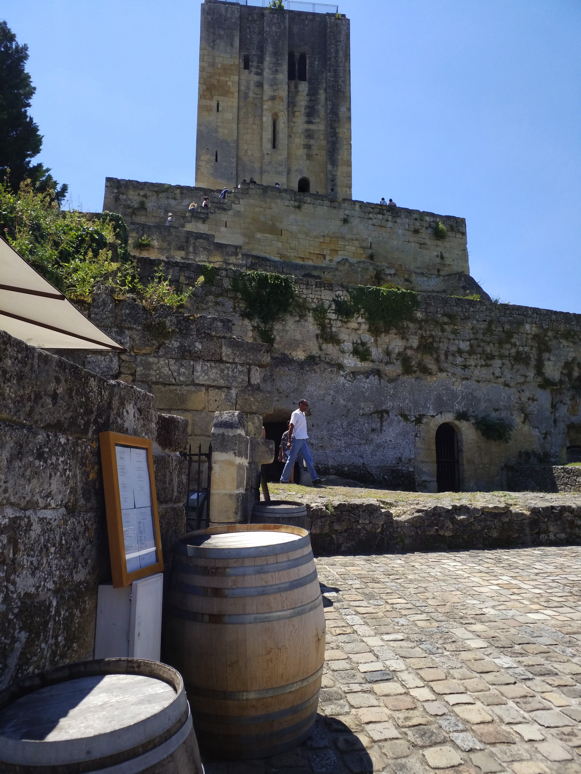

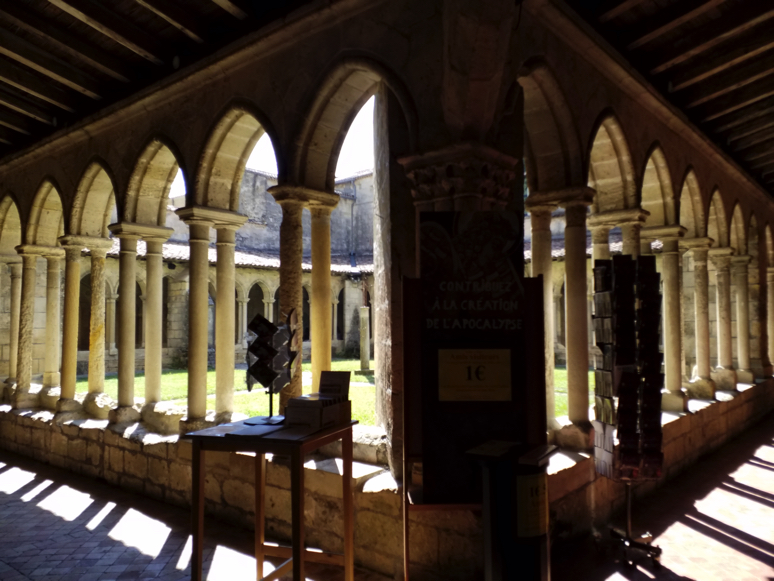
The King's Tower The vines of St Emilion The Cloister
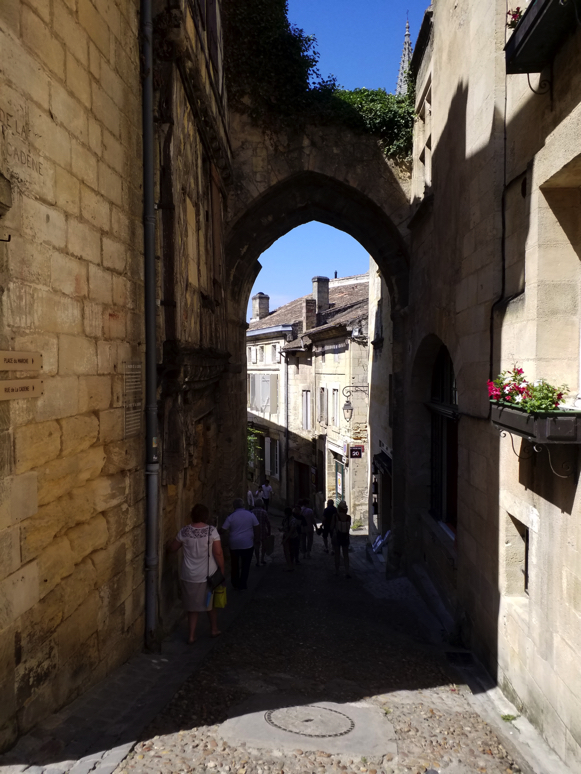

A St Emilion alley View from the Monolith church
Personalities linked to the municipality
- The Guadet family, an old family from Saint-Émilion, including Elie Guadet (1758-1794), Girondin, and Joseph Guadet (1795-1880), historian.
- Pierre Guillier (1852-1927), French politician who died in the town.
- Maurice Goudichaud (1889-1952), industrialist born and died in the town.
- Pierre Meyrat (1916-1969), French racing driver on circuits.
- Jean-René Fourtou (born in 1939), businessman.
- Philippe Etchebest (born in 1966), former chef at the Hostellerie de Plaisance.
- Eric Rabésandratana (born in 1972), coach of the “under 18s” of the Jeunesse Sportive of the Saint-Émilion / Puisseguin Jurisdiction.
- Maxime Gasteuil, humorist from the town.
- Details
- Administrator
- Uncategorised
- 1356
LEARN MORE ABOUT COOKIES
About Cookies
To ensure the proper functioning of this site, we sometimes need to save small data files on our users' equipment. The majority of websites do the same.
What is a cookie ?
A cookie is a small text file that websites save on your computer or mobile device when you visit them. It allows these sites to remember your actions and preferences (username, language, font size and other display settings) for a given time, so that you do not have to re-enter this information each time you visit these sites or navigate from one page to another.
Technical cookies:
Basically, monsudouestfrance.com uses cookies to: manage the identification system (essential if you want to log in), record anonymous statistics for the website (not essential, but allows webmasters to know how many visits concern the site ).
Other cookies:
monsudouestfrance.com does not use any tracking system. However, the use of the google analytics module and social network buttons requires tracking cookies.
How to control cookies?
You can control and / or delete cookies as you wish. For more information, visit the aboutcookies.org website. You can delete all cookies already stored on your computer and configure most browsers to block them. However, in this case, you may need to indicate certain preferences yourself each time you visit the site, and some services and features may not be accessible.
Subcategories
Legal notice
Legal notice
In accordance with LAW n ° 2004-575 of June 21, 2004 for confidence in the digital economy :
Publisher information
MY SOUTH WEST FRANCE. COM
Non-commercial site
40430 SORE
Founder / Administrator
Michel SIX
https://monsudouestfrance.com
Accommodation
PLANETHOSTER
The head office :
Canada - France
Legal Notice
In accordance with the law of January 6, 1978, all users have the right to access, rectify and delete information concerning them. Unless the user opposes, this information may be transferred or exchanged.
This right can be exercised at: monsudouestfrance.com
Terms of use
Anyone who accesses the monsudouestfrance.com site (hereinafter the "Site") undertakes to comply with these conditions of use, which may for certain services be supplemented by special conditions. The data disseminated on the internet and extranet may be regulated in terms of use or be protected by a property right.
Everyone is responsible for the data they disseminate, use and / or transfer and as such undertakes to comply with the French regulations in force, in particular those relating to clearly illegal content (pedophilia, incitement to racial hatred, etc.) or the protection of the rights of third parties (intellectual property rights, etc.). The publisher is not responsible for the use of data, content broadcast or services of another person and which, in particular, does not comply with the regulations in force.
The data, including their content, the profiles and the tools attached to them, the downloadable documents, the iconographic and photographic representations, and the legal marks present on the Site, are protected by intellectual property rights. Any reproduction or representation, even partial, of the aforementioned elements, for purposes other than private use, on any medium, is prohibited and could engage the civil and criminal liability of the person who does not respect this prohibition. The characteristics and availability of the products and services mentioned on the Site are valid for mainland France.
We invite you to read our terms and conditions of use.
Protection of personal data
We invite you to read our confidentiality policy which presents the rules for the protection of personal data in the context of the use of our site.
Using e-mail
If you wish to use the electronic mail made available to you on this site, you are informed that the secrecy of correspondence transmitted over the Internet is not guaranteed.
Copyright
All reproductions or representations, in whole or in part, by any means whatsoever, all automated or semi-automated requests for data published on this site, made without the authorization of monsudouestfrance.com are illegal and constitute an infringement (Law of 11 March 1957 article 40/41 Penal Code article 425).
The content of the site is constantly updated and monitored.
Furthermore, we are neither responsible nor responsible for the accuracy and completeness of the information published. This also applies to the websites which we refer to on the site, monsudouestfrance.com disclaiming all responsibility for their content.









